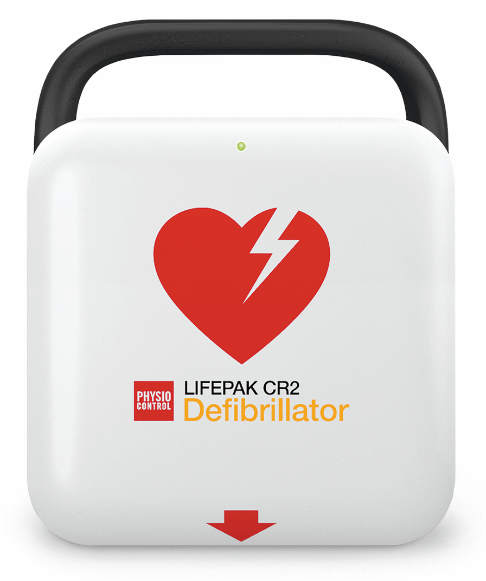Please contact us on 0116 2340567 to check stock availability

Public access AEDs are Automated External Defibrillators that are designed to be made available to non-specialist users. Operation is purposely made to be so simple that literally anyone can use them.
This equipment, regardless of the brand or configuration, is always very similar and led by a programmed voice from within the unit. An untrained passer-by is capable of saving a life.
Based on the Stryker Lifepak CR2, cost of ownership over the 8-year Warranty period, including the provision of consumables such as electrodes and batteries, is less than 66 pence per AED per day. If it’s available to 30 people to use, that’s just over 2 pence per person per day. Compare that with your other business costs, and you’ll see the simple case for ownership. The more people who have access to it, the lower the cost per person.

With its easy to follow graphics design, the LIFEPAK CR2 automated external defibrillator is available as fully or semi-automatic, and features:
Layered design – Layered design with easy to follow bold graphics. Both trained and untrained Automated External Defibrillator (AED) users clearly know how to begin.
QUIK-STEP™ electrodes – Peel directly off the base for faster placement.
cprINSIGHT analysis technology – Analyses for shockable rhythm during chest compressions with no need to pause.
Metronome and CPR coaching – Quickly sets an effective pace and audibly guides users by providing prompts that continually advise correct technique and depth.

ClearVoice™ technology – Detects background noise and adjusts tones and voice prompts to ensure they can be heard clearly in noisy environments.
Automatic – Available in fully or semi-automatic models.
Highest available escalating energy – Up to 360J for more effective shocks as needed.
Bilingual – Toggle between two pre-set languages when using the device.
Child mode – Delivers reduced energy and CPR guidance appropriate for children, without having to change electrodes.
LIFEPAK TOUGH™ – IP55 rating for challenging environments.
Warranty – Backed by an 8-year warranty.
LIFELINKcentral AED program manager – Monitor AED programs by tracking AED status, sending patient data to emergency responders and hospitals, detecting AED locations and other tools.
Whether you require a new AED or need accessories for your existing device, Euro Energy can support you further with replacement batteries, electrodes and a range of additional accessories.

For further information on the Stryker / Physio Control Lifepak CR2 AED, or to discuss our range of original manufacturer & compatible medical batteries and original medical accessories contact our friendly & knowledgeable UK Customer Services team on Leicester 0116 2340567 or email info@euroenergy.co.uk